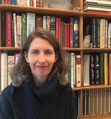Lory Widmer Hess's Blog, page 2
June 14, 2025
Six years in Switzerland
People often ask how I like living in Switzerland. I always smile and say I like it, it’s beautiful, I appreciate many things.
I don’t tell them that for me, moving to Switzerland was a lot like dying.
 English chapel, Davos
English chapel, DavosThough not to be compared to the desperate flights of many forced to leave their homes, in danger of their lives — I moved by choice, after all, and my other half’s origins are here — I did find it a disorienting, even traumatic experience. I had to sort through the possessions of a lifetime, deciding what to keep and what to give away, sell, or discard. Every book, every piece of paper, every plaything or item of clothing had to be evaluated, and for the most part, released to another plane of existence. Only a tiny fraction of all the things that had formed my environment for decades are still with me.
It turned out I really did not need most of what I’d left behind, but still, the letting go was not easy.
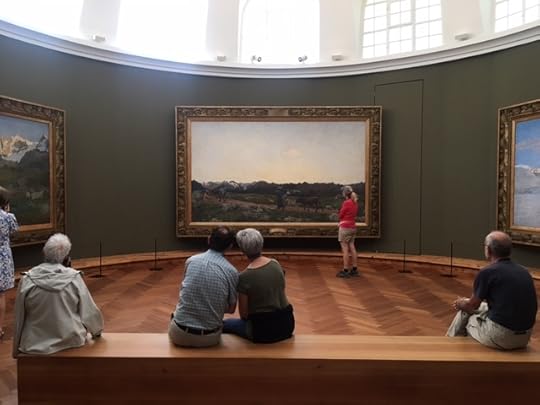 Segantini Museum, St Moritz
Segantini Museum, St MoritzWhen asked if I miss the States, “I miss the people,” is what I say. Although I’m thankful to be able to stay in touch with friends and family via modern technology, it’s not the same as in-person contact. Sometimes they, too, seem as far away as if they, too, had been left behind in another world.
Most of all I miss my language, the seamless sense of belonging, the taken-for-granted ability to understand and be understood. Losing this was like losing a body in which I’d been accustomed to move easily and freely, and taking on a new body that was awkward, stiff, and missing many important parts.
Again, I adjusted, and it was a good thing for me to have to struggle with that awkwardness. It loosened me up in places I hadn’t even known were holding tension. And although such loosening can — like dying — be frightening, when I could feel safely contained within secure relationships, among people who knew who I was even when I couldn’t express myself clearly, I experienced a reordering and reorganization that I knew was ultimately better for me. A time of feeling limited and unfree helped me to reach a more flexible, more relaxed kind of freedom.
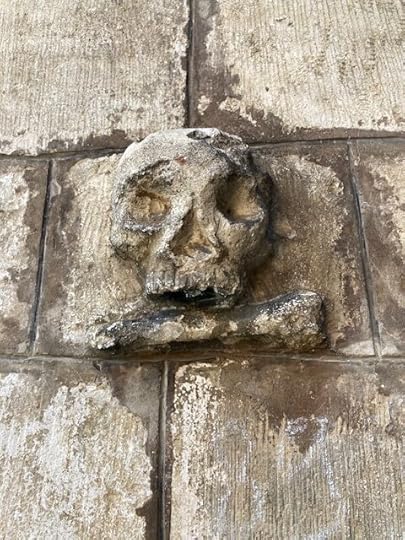 Sculpted block, Collegiale of St Ursanne
Sculpted block, Collegiale of St UrsanneMost of all, I stopped worrying that making mistakes was going to kill me. The death of my former existence turned out to be medicine for some of the fears that were keeping me in chains.
Perhaps it’s no accident that the anniversary of my departure for Switzerland six years ago also happens to be my wedding anniversary. Both occasions marked momentous transitions when I had to grow into a new kind of community, a new experience of myself in relationship with others. Neither transition was easy, but both were immensely worthwhile.
The world itself seems to be in transition right now. And from my perspective on the other side of some scary letting-go processes, I want to say: don’t lose heart. Find your container. Release what you don’t need, and know that you need less than you think. Remember who you really are. Inhabit your body, learn a new language. A world awaits discovery.
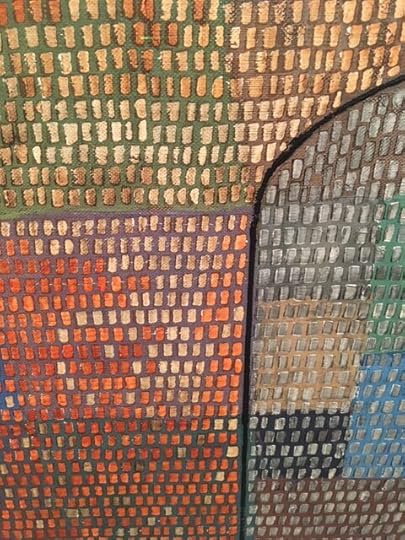 Detail of a painting, Paul Klee Museum, Bern
Detail of a painting, Paul Klee Museum, BernOne of the pleasures of being here is getting to share the experience with you. I’ve seen a good number of the sights of this lovely country over the years, though there is still much to explore. Below are links to all my “Postcards from Switzerland” posts so far, in celebration of a happy occasion. Hope you enjoy the tour!
SolothurnDavosFribourgMünsterTicinoLucerneVal Surses and EngadinRomainmoitierMeiringenSt UrsanneVerenaschlucht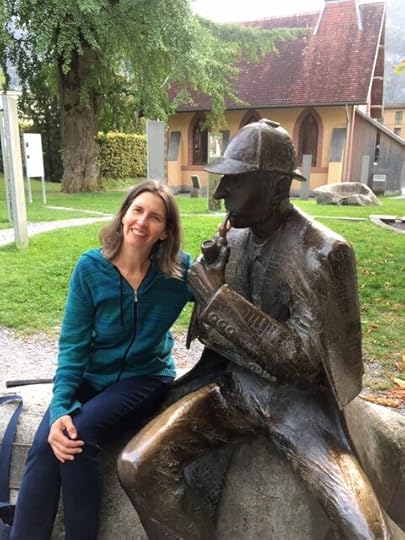 Me and Sherlock in Meiringen
Me and Sherlock in Meiringen
June 1, 2025
Month in Review: May 2025
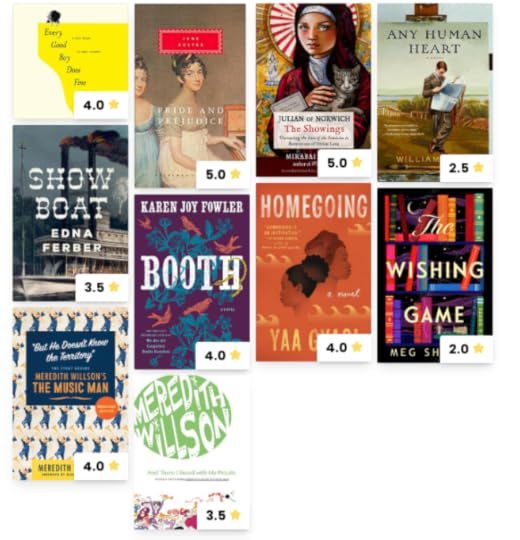 Every Good Boy Does Fine
by Jeremy Denk
Pride and Prejudice
by Jane Austen – Reread for Reading Austen 2025
The Showings
by Julian of Norwich, translated by Mirabai Starr
Any Human Heart
by William Boyd
Show Boat
by Edna Ferber
Booth
by Karen Joy Fowler
Homegoing
by Yaa Gyasi
The Wishing Game
by Meg Shaffer“But He Doesn’t Know the Territory” and
And There I Stood with my Piccolo
by Meredith Willson
Every Good Boy Does Fine
by Jeremy Denk
Pride and Prejudice
by Jane Austen – Reread for Reading Austen 2025
The Showings
by Julian of Norwich, translated by Mirabai Starr
Any Human Heart
by William Boyd
Show Boat
by Edna Ferber
Booth
by Karen Joy Fowler
Homegoing
by Yaa Gyasi
The Wishing Game
by Meg Shaffer“But He Doesn’t Know the Territory” and
And There I Stood with my Piccolo
by Meredith Willson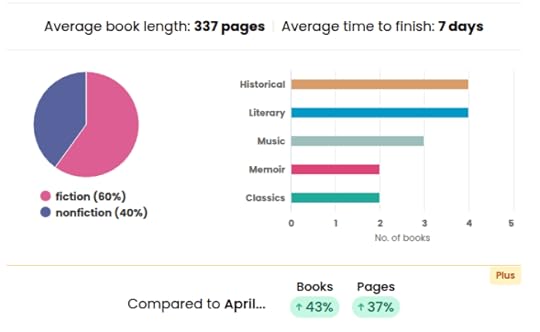 Reading the Theatre continues
Reading the Theatre continuesAfter getting started with Judi Dench last month, I could not seem to stop reading books set in or about stage productions, and came across a couple of good ones.
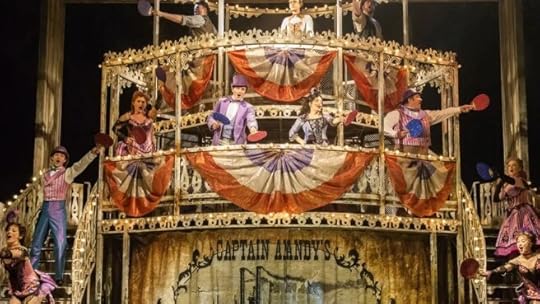 A 2016 London revival of Show Boat
A 2016 London revival of Show BoatShow Boat by Edna Ferber, basis for the Rogers and Hammerstein musical, offered a colorful look at the vanished world of floating entertainment on the Mississippi shortly after the Civil War. A dated novel in many ways, but still effective storytelling, I found.
I also enjoyed Karen Joy Fowler’s Booth, about a strange and haunted group of siblings, one of whom was a great actor while another shot Abraham Lincoln. Fowler’s contemporary fantasia on historical themes goes more deeply than Ferber’s novel into the racial injustice woven into American culture, considering the differing attitudes that split the family.
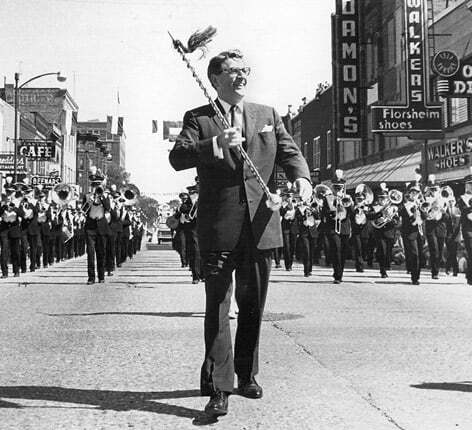 Meredith Willson leading the band celebrating The Music Man’s premiere
Meredith Willson leading the band celebrating The Music Man’s premiereIn a moment of Book Serendipity, I next read two books by Meredith Willson, in one of which he mentions that he briefly worked on a radio show called “Hollywood Show Boat”; he also mentions the Booth Theater in New York. In case you don’t know, Willson also wrote the book, lyrics, and music for The Music Man, an iconic American musical, and if you have not seen it, you should.
Reading about its origins in But He Doesn’t Know the Territory fascinated me—the persistence of Willson and everyone involved was astonishing, and it was interesting to learn how his use of speech-rhythm-as-music developed. I also enjoyed Willson’s reminiscences about his Iowa upbringing and early career in And There I Stood with my Piccolo. I’m surprised I’d never heard of these delightful books, so thanks to the University of Minnesota press for reprinting them.
A disappointmentAny Human Heart by William Boyd sounded terrific — a “whole-life” novel of a man who spent stints as a spy and an art dealer, in the form of his intimate diary. I expected something Robertson Davies-esque, but instead it was like an Adrian Mole diary that went on for far too long and included too many disgusting sex scenes and absurd meetings with real-life famous people (Picasso, Hemingway, etc.).
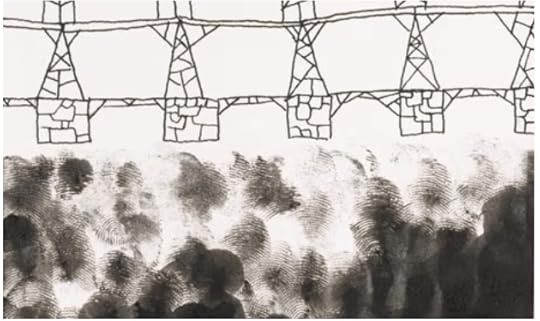 Fake artwork by “Nat Tate”; read more about it here
Fake artwork by “Nat Tate”; read more about it hereThe latter were mixed in with made-up famous people, including one artist, Nat Tate, around which Boyd had formerly created an elaborate hoax. All, real and fake, were allotted pretentious footnotes. For me, this had the curious effect of draining life from the real people, rather than giving verisimilitude to the invented characters. The exception was a vicious but effective characterization of the Duke and Duchess of Windsor, who featured in one of the longer episodes and made a return appearance later. I think the book would have been stronger if it had focused on that, but instead it flitted off into more unlikely episodes and then petered out with the main character never having really grown up, as far as I could tell.
Anybody read this or anything else by William Boyd? Is there something better I should try?
Currently reading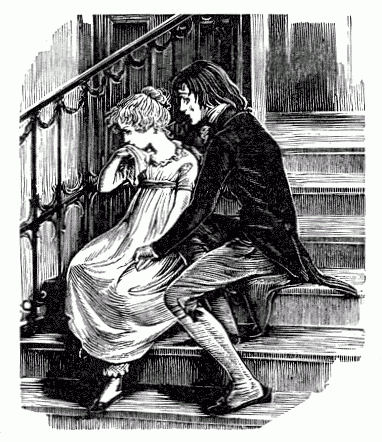 One of Joan Hassall’s engravings from Mansfield Park (Folio Society)
One of Joan Hassall’s engravings from Mansfield Park (Folio Society)I’m on my third read of the Austen 2025 readalong, Mansfield Park — I got confused about the order and thought Emma was up next, but she’s fourth, of course.
This is another one suitable for Reading the Theatre, with its home production of the drama “Lover’s Vows” coming up. But already, just a few chapters in, I notice that the theme of playing a part in life, putting on a show that will deceive and mislead others, has been introduced by a world-weary Mary Crawford:
“With all due respect to such of the present company as chance to be married, my dear Mrs. Grant, there is not one in a hundred of either sex who is not taken in when they marry. Look where I will, I see that it is so; and I feel that it must be so, when I consider that it is, of all transactions, the one in which people expect most from others, and are least honest themselves.”
It’s a much more ambitious and complex novel than the previous two, and though I already know what happens, I’m interested to see how Austen unfolds this drama.
On the blogTen Books of SummerA new way to find your next favorite readApril Reading in ReviewWhat’s on your shelf this month?
Linked at The Sunday Post at Caffeinated Book Reviewer, the Sunday Salon at Readerbuzz, and the Monthly Wrap-up Round-up at Feed Your Fiction Addiction
May 25, 2025
Ten Books of Summer
When Cathy of 746 books announced last year that she would not be hosting 20 Books of Summer this year after ten successful years, Emma of Words and Peace and Annabel of AnnaBookBel both volunteered to take it on. Though I have sworn off doing too many reading challenges this year, I couldn’t resist joining in with the large and enthusiastic crowd of participants, by making at least an aspirational list.

As well as keeping up with the Jane Austen 2025 readalong, I’d like to coordinate with some other upcoming events that I enjoy – Reading the Meow, Paris in July, and Women in Translation. As you’ll see, the bulk of my list falls into the latter category, as I found so many tempting possibilities when I started looking, including some that count for other challenges too.
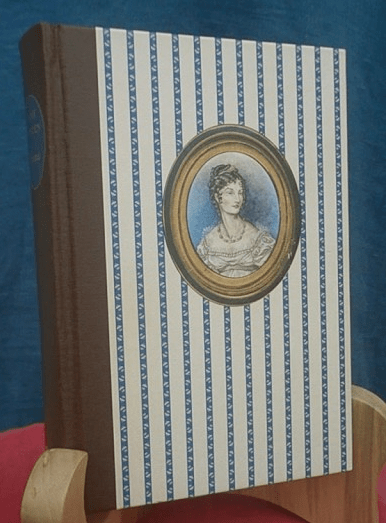
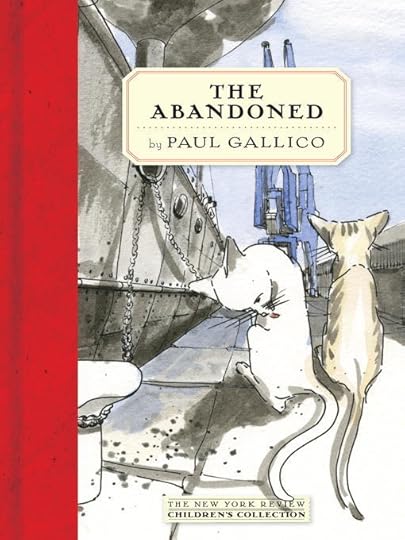
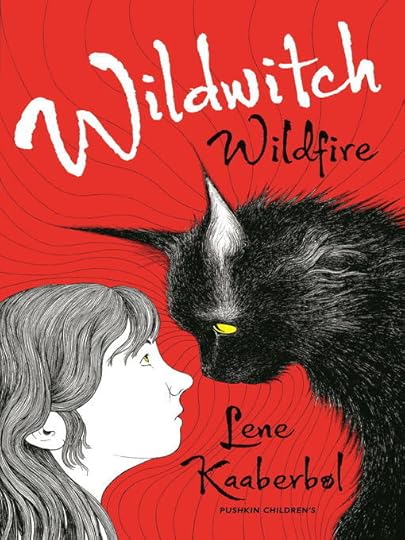
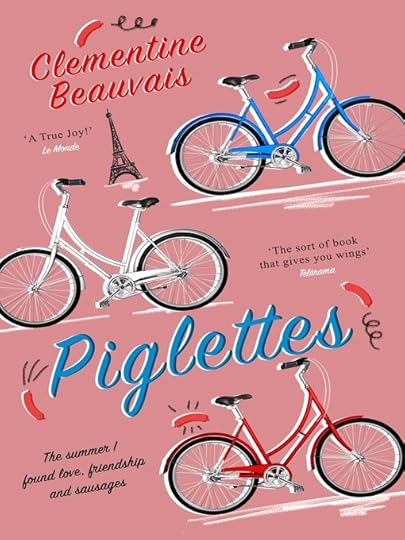
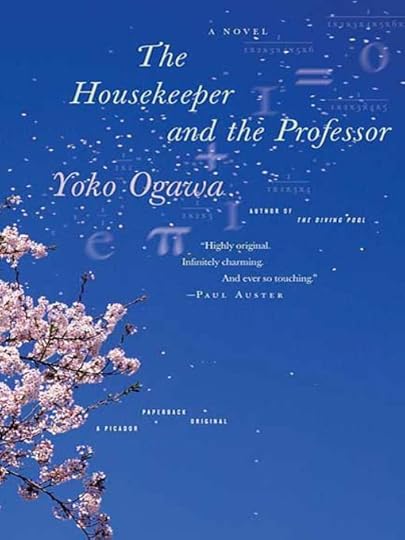 Emma by Jane Austen – Reading Austen 2025The Abandoned by Paul Gallico – Reading the MeowWildwitch: Wildfire by Lena Kaaberbol – Reading the Meow, Women in TranslationThe Piglettes by Clementine Beauvais – Paris in July, Women in TranslationThe Housekeeper and the Professor by Yoko Ogawa – Women in Translation MonthEva Luna by Isabel Allende – Women in Translation MonthLetters from Tove by Tove Jansson – Women in Translation MonthBird Cottage by Eva Meijer – Women in Translation MonthThe Shamer’s Daughter by Lene Kaaberbol – Women in Translation MonthThe Ingenious Language by Andrea Marcolongo – Women in Translation Month
Emma by Jane Austen – Reading Austen 2025The Abandoned by Paul Gallico – Reading the MeowWildwitch: Wildfire by Lena Kaaberbol – Reading the Meow, Women in TranslationThe Piglettes by Clementine Beauvais – Paris in July, Women in TranslationThe Housekeeper and the Professor by Yoko Ogawa – Women in Translation MonthEva Luna by Isabel Allende – Women in Translation MonthLetters from Tove by Tove Jansson – Women in Translation MonthBird Cottage by Eva Meijer – Women in Translation MonthThe Shamer’s Daughter by Lene Kaaberbol – Women in Translation MonthThe Ingenious Language by Andrea Marcolongo – Women in Translation Month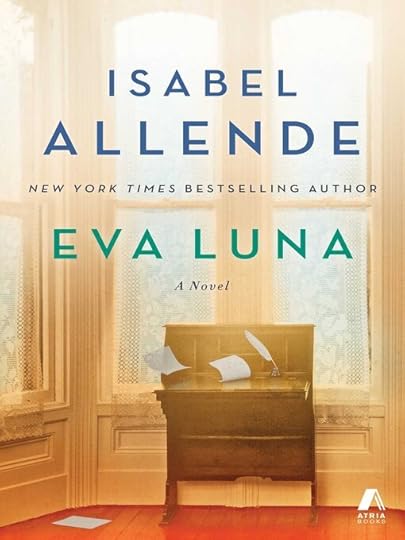
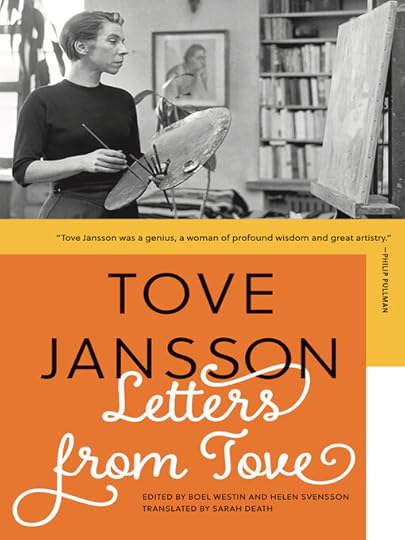
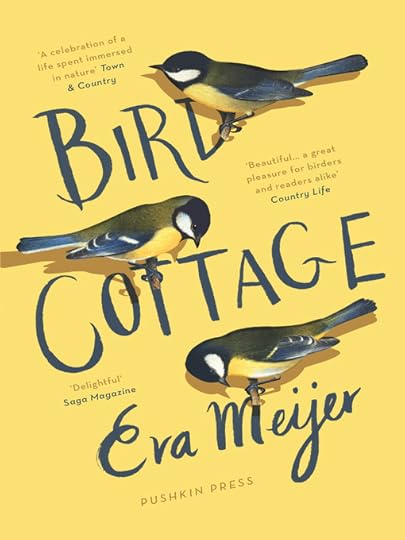
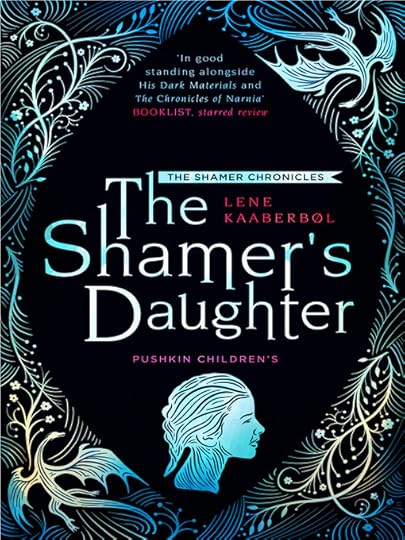
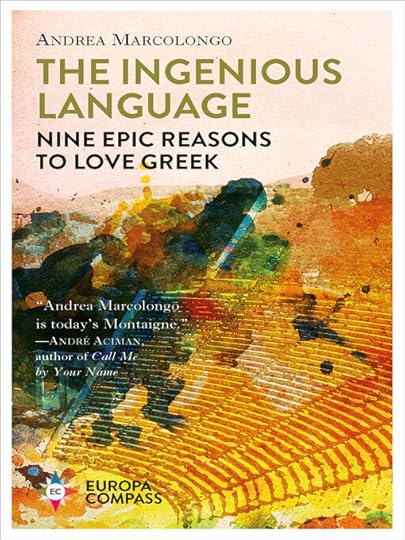
As a bonus book, there’s Une rose seule (A Single Rose) by Muriel Barbery, which I plan to read with Emma, who for the past several summers has kindly set up a Discord discussion group for those who’d like to read and discuss a book together in French. Reading it in translation would also be a great option for August. After last year’s magnificent but dense and depressing classic, Madame Bovary, we’ve chosen something short, lyrical, and contemporary: Une rose seule (A Single Rose) by Muriel Barbery. I hope you’ll be tempted to consider joining us.
What’s on your summer reading list?
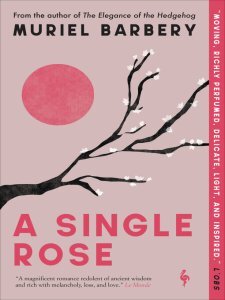
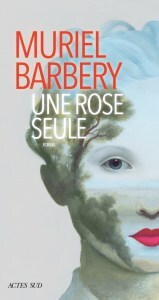
May 18, 2025
A new way to find your next favorite read
I’m always up for checking out an independent book-discovery site, so I was intrigued when I heard of Shepherd, a new platform built around recommendations by authors. Each author picks a theme, topic, or mood and five books they love. Via the site or weekly emails, readers are guided to lists that have something in common with their own favorite reads.
After being prompted to create a list of favorite books from 2024 (which anyone can do), I asked about submitting recommendations as an author, and was sent a long and detailed questionnaire to work through. I found this a bit intimidating, but was also impressed by the motive behind it. Shepherd is looking for authentic responses from booklovers, not marketing fluff from authors promoting their own work.
What inspired creator Ben Fox to start this new venture? He writes, “One day I walked into my local indie bookstore and saw little notes from the staff about which books are their favorites and why. I loved that idea because it exposed the passion behind the picks. Shepherd reveals that same passion by asking authors, experts, and interesting people for their favorite books around topics, themes, and moods.” I love reading those little notes, and always wished I could write my own. If you do, too, you’ll likely enjoy Shepherd.
It took me a while to come up with a unique, original theme that also chimed with my own work, but once I did, I had a good time picking out five titles to go with it and describing what moved me most about each one. My list went live this week, and you can view it here: The best books for making space for transformation.
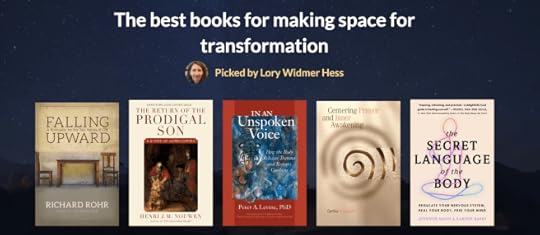
I hope you’ll check it out and also spend some time exploring the site. And of course, I hope you’ll find more great books to love!
May 3, 2025
Month in Review: April 2025
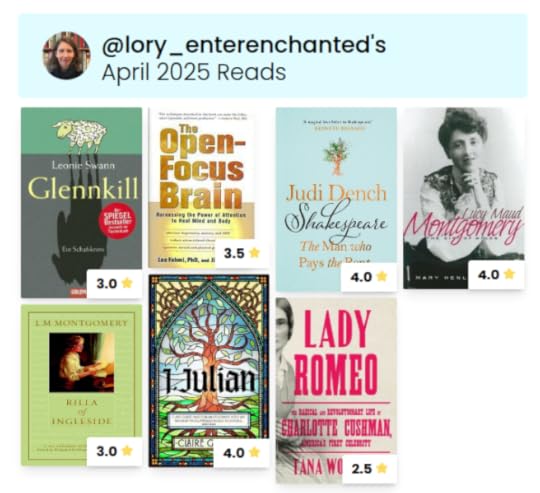
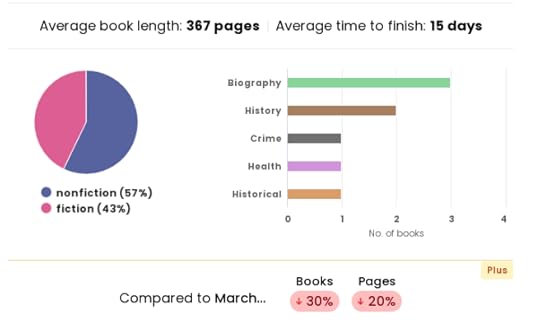 Reading the Theatre returns (in a small way)
Reading the Theatre returns (in a small way)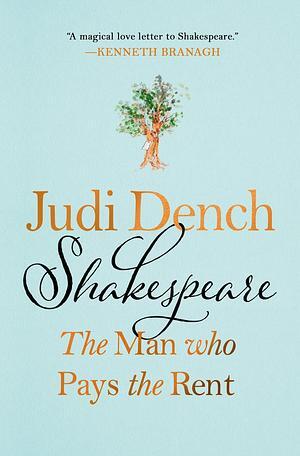
To listen or to read? That was the decision that confronted me when I pulled Judi Dench’s Shakespeare: The Man Who Pays the Rent off my TBR – deciding I needed to read at least one theatre-themed book this year, if not a whole month full. (Thank you to Chris of Calmgrove Books for inspiring me with his own Reading the Theatre reviews!)
Returning to my question, I thought the obvious answer was to listen, until I started on the audio version — and found out Judi Dench was not reading her part of the book, as her fading vision doesn’t allow for reading any more. Though the actress doing the job was very good, it just wasn’t the same. What really put me off, though, was that the other reader, Brendan O’Hea, sounded terrible – completely stiff and wooden. So I switched to reading the e-book. I also found reading better in this case because often I wanted to go over passages again, to understand the explanations and dissections of Shakespeare’s text, which flew by too quickly for me otherwise.
I did listen to an epilogue on the audio book, a recorded conversation between Dench and O’Hea that gives a flavor of how lively their interactions were in the original. If you, too, opt for reading, I highly recommend listening at least to this bit.
However you experience this book – and there are fans of the audio version – it’s a must-read for all who love Shakespeare and who want to deepen their understanding and enjoyment. O’Hea edited down over 100 hours of recorded discussions with Dench, covering all the Shakespearean parts she ever played, from Ophelia to Titania to Lady Macbeth to Mistress Quickly and many more. It offers priceless insights into the plays, the characters, Shakespeare’s language, performers, and performance history, and is educational, hilarious, and at times outrageous. O’Hea took out the profanity, but Dench’s inimitable, sometimes irascible personality shines through even on the printed page.
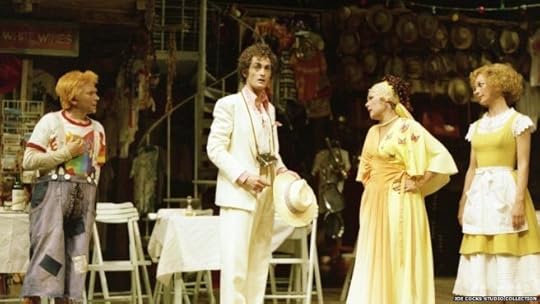
A number of Dench’s Shakespeare performances can be viewed on film; I decided to skip Lady Macbeth this year, along with the naked green Titania done in the 60s, which was a bit much, and watch a Royal Shakespeare Company production of The Comedy of Errors as a musical, directed by Trevor Nunn. As a bonus, Dench’s husband Michael Williams is also in this one, though not playing her husband on stage. It was a joyous production, bringing the improbable plot to energetic life – with perfect enunciation. If you need your spirits lifted for a couple of hours, do watch it.
 Another book I recommend
Another book I recommend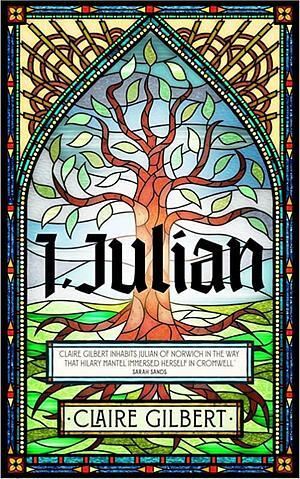
Uplifting in a completely different way was Claire Gilbert’s richly imagined, poetically written life of Julian of Norwich, of whom we know almost nothing aside from the mystical text she produced in the fourteenth century (the first book written in English by a woman).
It was an audacious task to take on, aiming to fill out the thoughts and deeds of a profoundly contemplative individual, but Gilbert pulls it off, creating a believable window into the medieval world in an idiom that reaches across the centuries to our modern minds. The homeliness and warmth that make Julian’s writing so beloved are elaborated to portray a character tested by suffering, who wrestles with the greatest spiritual questions and the smallest practical challenges in a way we can all relate to. Not least in Gilbert’s achievement is making the part of the story after Julian has become an anchoress – a hermit confined to a small building attached to a church – as compelling as the rest, or even more so.
I particularly appreciated the timeline at the end that clearly marked which characters and events were real and which imagined – I wish all historical fiction would include this information!
Currently reading
The next book I picked out at random from the TBR, oddly enough, turned out to have connections both to the theatre and to Norwich. Edith Holler by Edward Carey is a gothic tale that starts on the day of Queen Victoria’s death in 1901. It’s narrated by the title character, a child who lives in Norwich’s Theatre Royal — which she can never leave, not only because of poor health but because she was cursed at birth by a disgruntled former actor. Will she ever escape, or at least solve the mystery of Norwich’s missing children?
I’ve already recommended my first book by Carey, Little, and I hope this one will be as enjoyable, though definitely quite macabre. A theatre is in a sense a hall of ghosts, a way to play out what haunts us. “You’re haunted with wherever you are. We all carry our ghosts with us one way or another,” as Carey said in an interview. I look forward to seeing how he brings this strange story to life.
On the blogPostcards from Switzerland: VerenaschluchtMarch Reading in ReviewWhat’s on your shelf this month?
 The atmospheric path of the Verenaschlucht
The atmospheric path of the VerenaschluchtLinked at The Sunday Post at Caffeinated Book Reviewer, the Sunday Salon at Readerbuzz, and the Monthly Wrap-up Round-up at Feed Your Fiction Addiction
April 27, 2025
Postcards from Switzerland: Verenaschlucht
A couple of weeks ago, I wanted to take advantage of the lovely spring weather and go on an outing to a nearby place I’d never yet been: the Verenaschlucht, a gorge leading to a hermit’s hut and two medieval chapels. Located near the beautiful Baroque city of Solothurn, it’s known for ancient healing forces, a hidden gem.

We were not the only people who had this bright idea on a warm, sunny day, so there were lots of other travelers on the well-worn path that wound through rocks along a stream. Though the crowds made meditative walking somewhat difficult, we still enjoyed the constantly changing scene, with its trickling water, greenery, and limestone cliffs pierced with mysterious hollows.

After about twenty or thirty minutes of easy walking, we came out into the chapel area. Here, a shrine to Saint Verena is built into the rock itself, along with a hermitage and another tiny chapel nearby. The buildings date from the twelfth to seventeenth centuries, while the pilgrims’ pathway was landscaped later in the romantic style.
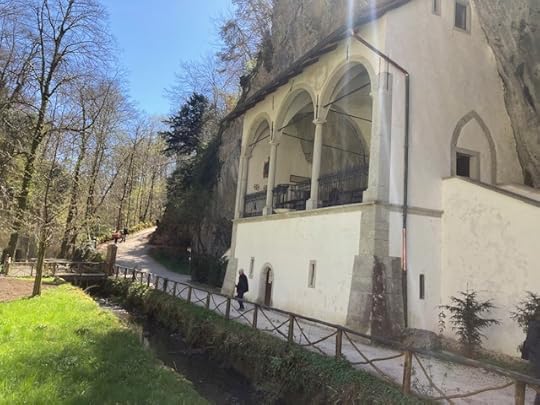
Completely open on one side to the elements, on the altar side of the chapel a cavern burrows deep into the cliff face — a dramatic juxtaposition of space and enclosure.

Above the altar, a painted sky shows the sun in eclipse at the hour of Christ’s crucifixion. Behind it, sculpted figures have been set up to represent Christ’s entombment, making use of the natural scenery.

Verena’s legend has her born to a Christian family in Thebes in the third century, and traveling to Switzerland with the Theban legion – Christians who served in the Roman army, but were martyred because they would not worship the emperor. Verena is said to have buried the martyred legionnaires, then gone to the gorge near Solothurn to live as a hermit, praying, fasting, and working miracles. Verena’s attributes are a comb and a water jar, which represent her service to the poor and to lepers.

A hermit’s hut still stands here and is still maintained and inhabited. Later Verena moved to Zurzach, where she ended her days in another cave. Her name is very popular in Switzerland, often shortened to Vreni.
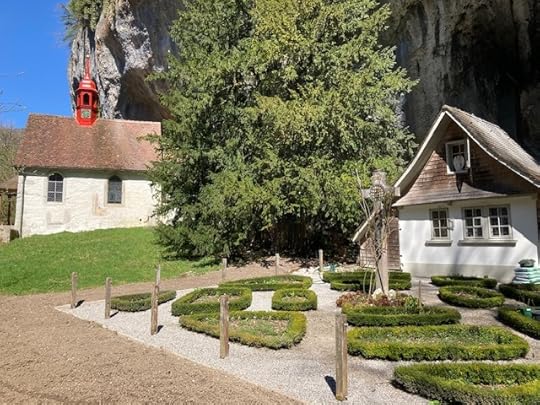
Though it took me several years to finally visit Verena, I’m glad I finally made the trip! I’ll be back again to explore this unique area and enjoy its peaceful atmosphere.
April 5, 2025
Month in Review: March 2025
I’m delighted to share an interview with Rev. Carol Saunders of The Spiritual Forum, where we talked about my book, When Fragments Make a Whole, and my spiritual and healing journey. I want to give Rev. Carol a big thank-you for her thoughtful way of reading, listening, and responding.– it put me wonderfully at ease and helped me to articulate things in new ways. Being interviewed doesn’t seem quite so intimidating now!
Click on the image below for the video link. If you prefer audio, look for The Spiritual Forum in your favorite podcast app, or click here for the episode.
 What I read this month
Maria
by Michelle MoranCrooked Heart and
V for Victory
by Lissa EvansSpiritual Direction 101 by Teresa Blythe
A Tale of Time City
by Diana Wynne Jones – Reread for March Magics
Their Finest
by Lissa EvansKalpa Imperial by Angelica Gorodischer, translated by Ursula K. Le GuinDangereusement Douce by Antoine Laurain
Sense and Sensibility
by Jane Austen – Reread
Pat of Silver Bush
by L.M. Montgomery
What I read this month
Maria
by Michelle MoranCrooked Heart and
V for Victory
by Lissa EvansSpiritual Direction 101 by Teresa Blythe
A Tale of Time City
by Diana Wynne Jones – Reread for March Magics
Their Finest
by Lissa EvansKalpa Imperial by Angelica Gorodischer, translated by Ursula K. Le GuinDangereusement Douce by Antoine Laurain
Sense and Sensibility
by Jane Austen – Reread
Pat of Silver Bush
by L.M. Montgomery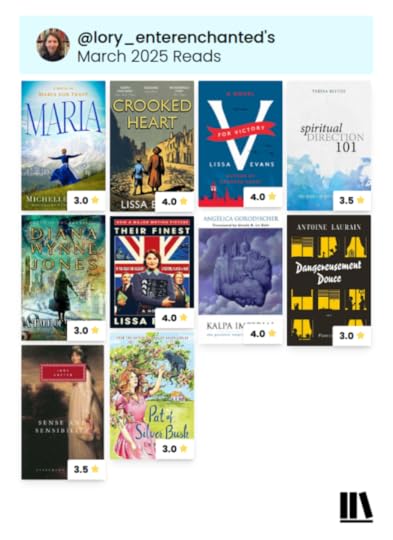 A book I recommend
A book I recommendI’m trying to read more from my own shelves, including virtual ones, and Kalpa Imperial is an ebook I picked up in a Small Beer Press bundle sale some years ago. Ursula K. Le Guin translated it from the Spanish of Angelica Gorodischer – and reading Le Guin is one of my goals this year too, so it seemed a logical choice.
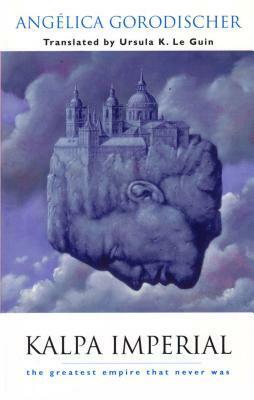
Once I’d finally jumped in, I was quickly absorbed in a collection of loosely linked tales of an “empire that never was.” Not fantasy in the sense of including magical powers or supernatural elements, the book nevertheless has a distinct fairy-tale feel. It’s told in a dreamy, hypnotic prose that has a harsh, brutal undercurrent (as many fairy tales do). The plot, such as it is, mainly concerns the rise and fall of imperial rulers and dynasties, good and bad, under whom people suffer and cope and occasionally attempt revolution.
In other words, it’s a world not unlike ours – but given the distance of a mythic consciousness, which can help us in our struggles with reality. To me that is a major purpose of fantasy fiction, and the reason it was my first love as a reader. I can see why Gorodischer is considered a fantasy master.
The writing is simply gorgeous. Here are some of the quotes I highlighted:
” ‘So, why are there so many sick people?’ ‘Because it’s easier to get sick than to look for one’s right place in the world.’ “
“Human beings are incapable of being still and letting things happen without interference.”
“They were not men; nor were they wolves, nor hyenas, nor vultures, nor eagles. They were blind organisms, mindless, nerveless, without feeling or thought, with only the power to wound, and blood to shed.”
” ‘But all has not been said,’ she said, ‘for words are the shadow and the light of things and things are only what is being born and being.’ “
If I”d read this a bit earlier, I could have linked up to Indie Publishers Month – I’m half a year ahead for Women in Translation – but if you’re interested in either of those themes, this would be a splendid choice. And if you’ve read it, I’d love to know what you think.
Currently reading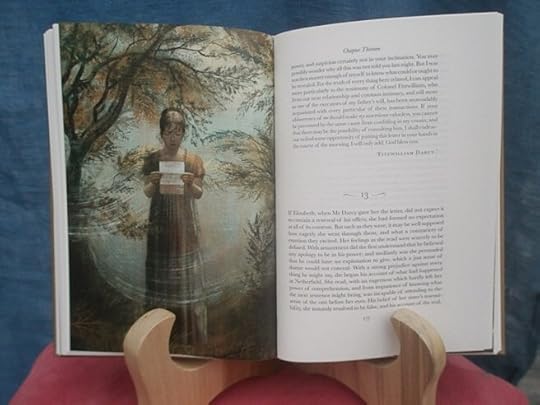 Illustration by the Balbusso sisters from Pride and Prejudice (Folio Society)
Illustration by the Balbusso sisters from Pride and Prejudice (Folio Society)With a Classics Club event taking place to celebrate Jane Austen’s 250th birthday, I decided to reread Jane Austen – again, from my own shelves, as I have illustrated editions of all six novels – I wrote about them here, here, and here. I love the beautiful books I own, but I don’t always do well at actually reading them!
I’ve finished Sense and Sensibility, and am now working on Pride and Prejudice, in a luxurious Folio Society edition. It’s one of my favorite classics, and the illustrations by Anna and Elena Balbusso – also favorites of mine – only enhance the enjoyment. Our world may be in deep trouble, but at least sometimes a book can approach perfection.
More bookish delights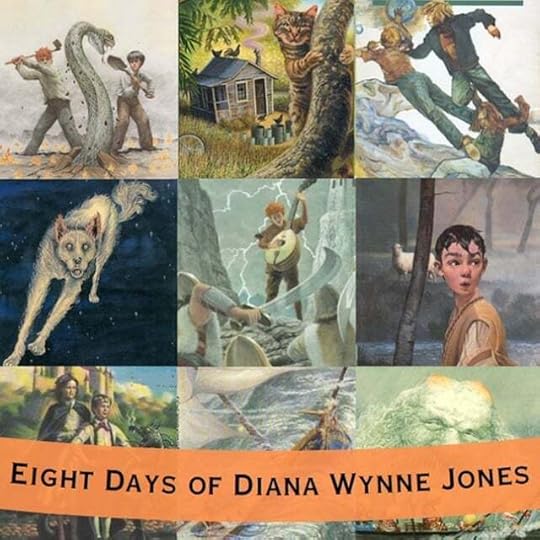
March has long meant “March Magics” for me, celebrating the work of Diana Wynne Jones and Terry Pratchett. I reread A Tale of Time City, and have been enjoying new host Chris’s reruns of his reviews of all the standalone novels by Diana Wynne Jones over at Calmgrove.
I was alerted by Jean of Howling Frog Books to the debut of a podcast that proposes to cover all of DWJ’s major works, divided up into four seasons of 8 books each. It’s called Eight Days of Diana Wynne Jones (after the novel that was chosen to start with, Eight Days of Luke.)
I’ve listened to the first season and it’s terrific! The hosts, both authors themselves, are impressively knowledgeable and enthusiastic, and their conversation is full of insights as well as just fun to listen to. They are going roughly by decade, so next time will be the 80s, Jones’s most brilliant period. If you are a fan, you have to listen to this.
On the blogIn a Time of War – thoughts on A Tale of Time City and other books set during World War II, for March Magics 2025. February Reading in ReviewWhat’s on your shelf this month?
March 16, 2025
In a Time of War #MarchMagics2025
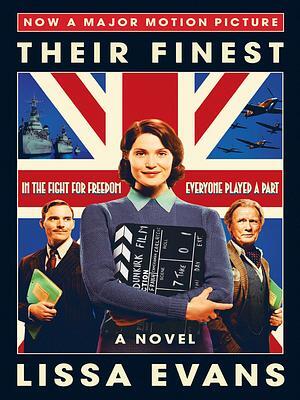
This month, looking for something to keep my mind off current events, I came across author Lissa Evans in my TBR. Some time ago I had enjoyed a movie based on one of her novels, Their Finest, and wanted to look into her writing.
I did get around to that book eventually (originally titled Their Finest Hour and a Half, it concerns the making of a wartime “true story” film that isn’t exactly true), but I started out with Evans’s trilogy centered around Noel, a parentless boy who finds unlikely companionship with a couple of older women. During World War II, when he’s evacuated from London, he forms an unlikely but successful alliance with Vee, a woman whom life has not treated kindly – this story is told in Crooked Heart and V for Victory. In a prequel, Old Baggage, we meet Noel’s former guardian Mattie, who earlier fought for the suffragette cause and is still determined to play a role in changing the world, if only by influencing the next generation.
In the midst of all this realistic historical fiction, I wanted to read something for March Magics, hosted by Calmgrove Books – a celebration of fantasy authors Diana Wynne Jones and Terry Pratchett. And what better choice than A Tale of Time City, the book by Jones which starts out with a girl getting snatched off a train platform as she’s being evacuated from London to the country during World War II? What might all these wartime stories have to say to one another, and to us today, I wondered?
With Evans’s work, I was impressed by how absolutely real and alive the characters became for me. I would not be surprised to open a history book and find a report on Mattie’s suffragette activities, or an encyclopedia and discover that Noel had grown up to become a famous scientist or scholar. But though they were in many ways extraordinary people, Evans made them real through their ordinariness, their humanness, the way they had to scrape through difficult times and face their mistakes and shortcomings with humility. These stories made me laugh at their foibles and gasp at their shocks, feeling with and for them. And amid the rubble and the deprivation of war, there was magic in how people found each other, forming new relationships, creating something as much was being destroyed…a brave venture, when those fragile bonds could be suddenly, shockingly cut short by death.
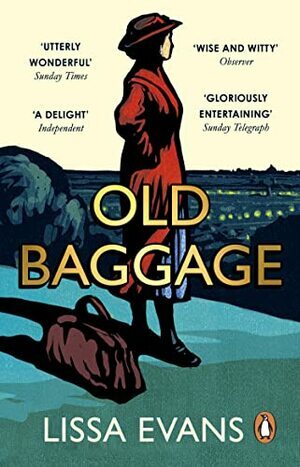
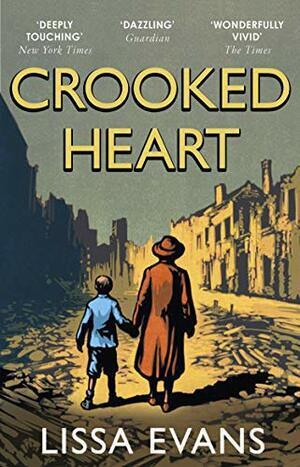
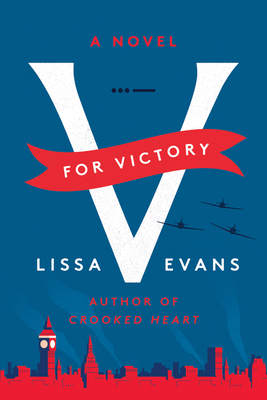
With Time City, we’re plunged into a similar situation of displacement and danger that also becomes a source of magic and wonder – more literally, in this case. Vivian, the girl from our world, is kidnapped by a boy named Jonathan, in league with a younger boy, Sam, both citizens of Time City – a futuristic place floating outside of ordinary time, where people study, profit from, and sometimes manipulate the progress of history.
A crisis is looming, though; it seems that Time City is on the verge of breaking up, and nobody knows quite how to deal with it. Jonathan and Sam’s kidnapping Vivian is part of a plan to save their world, but as the three children journey through time and space on a quest for stability, they invariably make things worse. When a proud, immature person wants to save his world, and instead of looking towards more mature guidance, takes impulsive actions based on partial or misunderstood information, it can’t end well … something that happens all too often in our own everyday world.
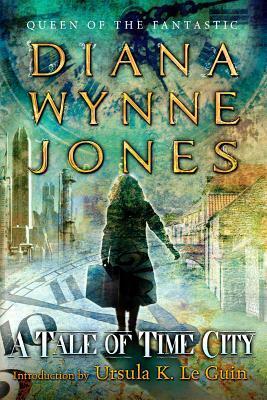
Here, though, that dilemma is given a fictional setting that allows for Jones’s imagination to really fly. Since Time City is outside of time, she gets to create a future history for our earth and all kinds of inventions. Some of the inventions are fun and wish-fulfilling, exemplified by the infamous Butter-Pie, but also including a belt with buttons to press for multiple functions (light, low-gravity, turning your finger into a pen), the ability to watch all the movies ever made through the centuries, and portals that make time travel as easy as taking the subway. Others are darker and more disturbing — such as when the children visit an era in history known as the “Mind Wars”. In fact, there are quite a number of scenes that would have given me nightmares as a child if I’d really given myself a chance to think about them.
But these dangers are not dwelt on, as the pace of the story hurtles quite rapidly and there are lots of distractions, from bickering between the children to a classically frightening tutor who assigns a translation exercise to Vivian that makes for some of the book’s most comic scenes (and there are many). Along with humor and drama, Jones mixes science fiction and fantasy tropes with abandon; though the city is supposedly powered by science rather than magic, it’s also a place of legend and ceremony, with myths about its founders Faber John and the Time Lady woven throughout.
Unlike their elders, Jonathan and Sam take the ancient stories seriously, and it turns out they’re correct to do so. However, they are not correct about a lot of other things; one of the points the story makes is that even when we believe or know that something is going to happen — in Time City, ghost-like visions stamped onto the fabric of time give such glimpses of future events — our interpretation of those events might not be the right one, causing trouble.
The lively mix of wild, exciting, mysterious, and paradoxical experiences seems to be what keeps the girl, Vivian, from being overly despondent at her situation. She gets caught up herself in the quest to save Time City, which increasingly becomes incompatible with her original longing to simply return home, and the mistakes pile up into a royal tangle. Many elements come together in a great crisis, to be rearranged or re-sorted and settle into a new reality. That’s a common pattern in DWJ’s books, and yet it seldom seems repetitive or tiresome. It’s always a fresh instance of the true potential of “comedy” – a story that brings us through chaos and back into wholeness.
Though fun to read, I do find A Tale of Time City to be something of a weak link in the chain of truly extraordinary and original books that Diana Wynne Jones produced during the 1980s, from The Homeward Bounders to The Lives of Christopher Chant. It does bring up an important question — What is the moral obligation of living outside history, with a greater awareness than its inhabitants possess? Is it possible to help and not merely to meddle or exploit? — that isn’t given time or space to be worked in a really satisfying way. There is much more external than internal action, with lots of racing around through history and touring Time City, and the characters end up being somewhat sketchy and one-sided. Sam’s passion for butter-pies starts to grow tedious, and though there’s a hint of trouble in Jonathan’s relationship with his father (a high Time City official), it’s just an indication of something beyond the story surface. Even Vivian, the point-of-view character, remained vague and generic to me, compared to unforgettable Jones creations like Nan in Witch Week or Polly in Fire and Hemlock.
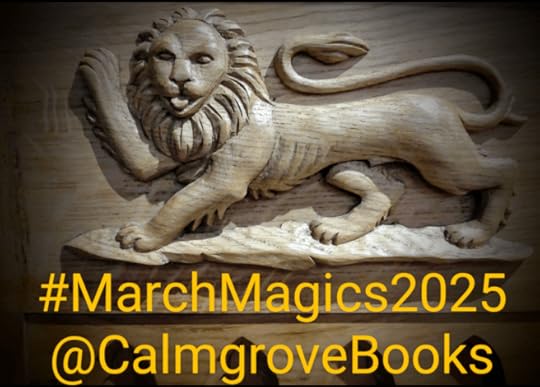
Nevertheless, I agree with what Ursula Le Guin points out in her introduction to the edition I read: that like all DWJ’s books, this one is characterized by “intelligent truthfulness“ and “moral honesty”. That may not sound glamorous, but for a fantasy writer, these are very important qualities to have. They mean that when a writer starts putting inner realities into images, showing us the endless realm of possibilities at work in our creative spirit, we are in safe hands. We won’t be deceived or misled, but shown truth in the way humans absorb it best: through living pictures that move our souls and have the potential to transform us, toward better, kinder, more aware versions of ourselves. In book after book, this moral core shines through, anchoring us amid all the wild inventiveness and humor.
That brings me back to Lissa Evans’s talent for combining drama and comedy as well, with an honest moral core. I also felt I was in good hands with her, brought to look at some tricky moral situations with compassion rather than rigid notions about right and wrong. In a time of warfare, when people are acting and reacting in angry, fearful, impulsive ways, it’s good to be reminded of that human potential.
The best stories educate us as well as providing needed distraction, a helpful distance from which — like citizens of Time City — we can look at things from a wider perspective. Destruction is part of the cycle of history, but what will we build out of the ruins? All of these books encouraged me to keep looking for that potential, and I hope you’ll look for it too.
March 1, 2025
Month in Review: February 2025
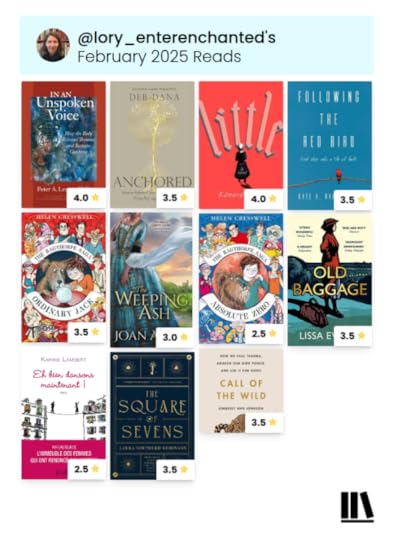 A book I especially recommend…
A book I especially recommend…Little was a most unusual approach to historical fiction, more of a historical fantasia — based on the life of the young Swiss girl who was to grow up to become the wax-museum impresario Madame Tussaud. We encounter a wide array of grotesque, absurd, sometimes repulsive characters, from aristocrats and artists to murderers and gutter rats, and marvel at her bizarre experiences leading up to and during the Reign of Terror in France. Illustrated by the author, in a style matching his eighteenth-century-flavored prose, this is a book to haunt one’s dreams.
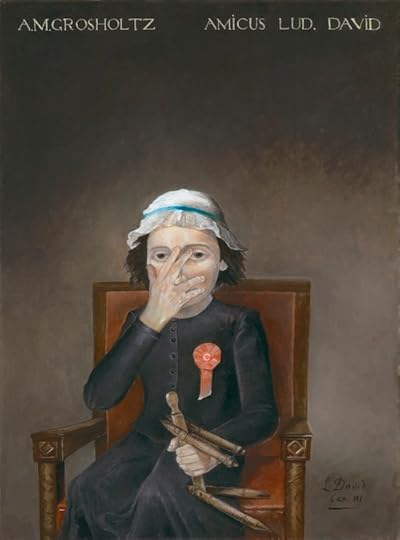
Jean-Louis David’s portrait of Marie Grosholz (the future Madame Tussaud)
From an article by Edward Carey at LitHub
After recommending Helen Cresswell’s Bagthorpe Chronicles to another blogger who was looking for some light reading to offer to a friend, I reread the first two books myself. I found them not as amusing as I remembered — perhaps I have been learning too much about developmental trauma and adverse childhood experiences, but this time young Jack’s experiences as the most ordinary member of an eccentric British family, along with his hapless dog Zero, struck me as disturbing rather than hilarious. Mr. Bagthorpe’s narcissism and cruelty were particularly unpalatable. Perhaps the later books in the series improved, but I didn’t feel moved to continue seeking them out.
Currently reading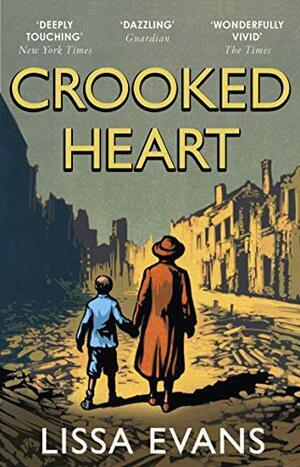
I enjoyed Lissa Evans’ Old Baggage, about a former suffragette wrestling with some ghosts from her past. In the final pages of the novel, she has a young boy handed over to her … and now I’m reading the continuation of that boy’s story, Crooked Heart. This book was actually written first, but takes place later, during World War II, when Noel is evacuated from London. I hear this one is even better than its prequel, so I have high hopes.
On the blog January Reading in Review Can we build a path to peace?What’s on your shelf this month?
Linked at The Sunday Post at Caffeinated Book Reviewer, the Sunday Salon at Readerbuzz, and the Monthly Wrap-up Round-up at Feed Your Fiction Addiction
February 16, 2025
Can we build a path to peace?
I recently finished a training for caregivers that involved two days a week of classroom time, over eight wintry weeks. Each day, after so much intense learning in a language that is not my mother tongue, I felt the need to get out and walk during my lunch break. I wandered in various directions through the unfamiliar town, past shops and houses, along the borders of fields, glimpsing the Alps in the distance on a good day.
In the last week of the course I discovered a path marked “Ökumeneweg” — Ecumenical Way. A sign at the entrance defined Ökumene as a Greek word meaning “the whole inhabited world.” To the builders of this Weg, it meant living together in peace, respecting the foreigner, shaping the future with justice across religious borders.

Why was this path here, in this particular location? As I walked along it, I discovered that it led from the Protestant (Reformed) church of the town to the Catholic church, joining two religious streams that had often been in destructive conflict. The Thirty Years War, for example, erupted a century after the Reformation as the Holy Roman Empire and its Catholic allies battled Protestant nations for supremacy. Religion and worldly power merged in a toxic mix that devastated Europe, killing as many as 8 million people in the deadliest war on the continent until World War I.
This Ecumenical Way, I learned, was one of several built in various places in 2017 to mark the half-millennium of the Reformation. Today, as the Christian religion becomes increasingly irrelevant in Europe, such a gesture might seem unremarkable, unnecessary, even wasteful. But it touched me, as a visible embodiment of the openness and goodwill that can overcome the forces of war. There was no intention to merge the two churches, to dissolve differences, but rather to create a free space between them, an avenue of communication and respect. 400 years ago, this would have been inconceivable.
 Stained glass in the Reformed Church of Zollikofen
Stained glass in the Reformed Church of ZollikofenI thought about my twenty classmates in the caregivers’ training, a motley mix from Eastern and Western Europe, Africa, the Middle East, and me, the lone American. All of our countries had known war and conflict, whether in the recent past or deeper in our history. Some of us had been torn from our homes, fleeing present danger to try to build a new home in a place of safety. Others, like me, had been uprooted by less violent events, but were still in transition, grappling with an unfamiliar language, learning new tasks, facing an uncertain future.
At first, we were all a bit stiff and uncertain with each other, but I had noticed how over the course of our eight weeks together our initial distance relaxed. Bridges were built through common experience, whether it was practicing sponge baths on a plastic dummy, giving hand massages to each other, or talking about our experiences with death and bereavement. We groaned when we had to do yet another role play and laughed at our classmates’ improvised dialogue. We applauded each others’ presentations on the symptoms of dementia or the best ways to prevent pneumonia. Something invisible was growing, something that had not been there before we all came together.

As I walked along the Ecumenical Way, I found more signs printed with verses and sayings by various authors. At the end of the path, near the Catholic church, was a quotation from the monastic code written in the sixth century by Saint Benedict of Nursia.
Be silent and listen
Incline the ear of your heart
Seek peace
In the course of our training, as we listened to each other and opened our hearts to the needs of another person, peace grew between us. This is the Way that embraces all differences in a common garment of humanity, a way it is our greatest task to discover and to follow.
When we all passed our final test, the room erupted with cheers, hugs, even some tears. A room full of strangers had become colleagues, fellow travelers, friends.
I had tears in my eyes myself, as I thought about what was erupting in my own faraway country, the suffering that people inflict on each other when they cannot find the Way that leads to peace. The other students in the room could well have shunned or mocked me for the sake of my nationality, yet they accepted me as an individual. They honored my intention to care for others, as they aspired to do themselves. With our caring intentions, we would each go on countering the forces of chaos in our small everyday way, and that gave me hope.
Such humble acts of care are not often recognized, they seldom make the news, yet they are building the pathways that lead into the future. Whenever we can, let us follow them.
 Christ meets a foreign religious stream — the Samaritan woman at the well.
Christ meets a foreign religious stream — the Samaritan woman at the well.

